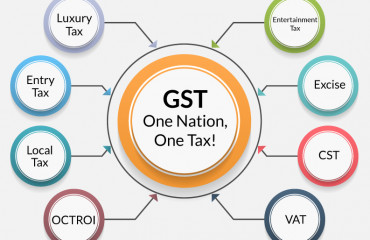
Thomas Piketty became famous for his seminal work that was published in a book titled Capital in the Twenty First Century. In this book, he focused on developed countries, especially the US, where he traced the growth of inequality.
Thomas Piketty became famous for his seminal work that was published in a book titled Capital in the Twenty First Century. In this book, he focused on developed countries, especially the US, where he traced the growth of inequality.
His concern was not so much with income than wealth, and here too, he distinguished between inherited and earned wealth. He advocated a tax on the rich who had such 'capital.'
Closer home, his work on inequality in India that came out earlier this year drew considerable umbrage, as critics tore into his data and methodology and concluded that his information and analysis were faulty. His recommendation of a wealth tax, however has remained on the discussion table.
A close look at the latest budget proposals on taxation suggests that Piketty's idea has played in the background. First, the budget has increased India's capital gains tax in terms of both long- and short-term rates.
Also read: Wealth redistribution will not fix India's economic inequality
The broad justification given, besides the ideology of tax simplicity, is that it is generally higher-income groups that deal in asset markets and hence the hikes do not really affect common citizens. Higher rates should make little difference to the rich.
Second, removal of the indexation benefit on sales of property has also been justified on grounds of equity. The government has stated that for properties of lower value that have been held for longer time periods, the new tax structure will have a lower outflow.
However, for the rich who deal in high-value real estate, the tax payable on capital gains will be higher—though even this extra burden can be absorbed, given their wealth.
Third, buyback proceeds in the hands of the recipient are to be taxed, which will affect richer groups who own corporate shares in bulk. This also brings in parity with other income earned from assets, like share dividends.
This is what Piketty flagged in his book, arguing that the stock options awarded by American CEOs to themselves should be taxed at a high rate. The budget's buyback move is similar in spirit.
All these measures can be interpreted as being baby steps to tax richer classes that can't really complain. If this approach has to be extended to other areas, some interesting options emerge. The rich put large sums of money into shares, real estate, art, designer clothes, jewellery, fancy watches, vehicles and other things they can own.
There is good reason to impose a surcharge on all property purchases above a threshold of, say, ₹10 crore. These rates can escalate, just as they do on income earned. This will either curtail ostentatious consumption or increase revenue. In a similar vein, states can raise stamp duty rates.
Also read: How the budget has eased the rules for international transactions
The rich are known to splurge on automobiles which could stretch to aircraft too. Here too, the GST Council could consider a much higher rate than the present slabs (with 28% as the highest rate) for vehicles priced above, say, ₹50 lakh. As all these taxes are progressive and would fund redistribution, they'd serve a valid purpose.
The redistribution part also deserves a review, probably even drastic rationalization. For this exercise, consider a few data points. The budget's outlay for India's free-food scheme aimed at the needy, which covers 800 million people and was recently extended by five years, is close to ₹2 trillion, which is about ₹2,500 per head.
Is there any adverse selection here? Non-needy users? This is pertinent when juxtaposed with employment data. The central bank's KLEMS data-base shows 643 million people employed in 2023-24.
Given a population of around 1.4 billion, this means that 757 million people were dependent on the employed, a count that includes children, senior citizens and jobless youth. India's dependency ratio appears low.
The free-food scheme dates back to the covid pandemic. But, interestingly, KLEMS data shows that employment grew 5.1% and 3.1% in 2020-21 and 2021-22, respectively. So the commonly held view that jobs were lost during these years was unfounded. It happened in some sectors, but overall employment increased.
Even if agriculture is excluded, as it could involve disguised unemployment, employment growth was 4.2% and 3.8% respectively. Therefore, India's job distress was overstated, which also means that there is scope for a roll-back of the free-food benefit.
The Survey on Unincorporated Sector Enterprises for 2022-23 says we had around 110 million employed in the non-agricultural space. Their average emoluments were at ₹1.11 lakh per informal hired worker, compared to ₹2.45 lakh for formal-sector employees. India's per capita GDP is around ₹2.11 lakh.
One could sieve this data by using provident-fund enrolment data and PAN numbers to pick those in need of government assistance. This can help us rationalize budgetary allocations in the coming years. Intuitively, by removing every 100 million workers who do not require food support, the government can save ₹25,000 crore.
Also read: FPIs withdraw ₹11,000 crore from Indian equities post Budget 2024
This would release resources that could be channelled into other social-welfare schemes, such as education or health facilities at government-aided establishments that require improvement in quality.
To conclude, we have compelling reasons to extend the Piketty argument and tax all ostentatious spending by the rich. This will reduce consumption or increase revenue (or some combination of both). In parallel, more effective targeting of welfare schemes can help release funds that could be channelled to other programmes. This way, the quality of the budget will also improve.
These are the author's personal views.
